
Roots
A quiet whisper often accompanies the daily ritual of tending to textured hair ❉ why does this oil, so beloved by a friend, seem to simply sit upon my strands, never truly sinking in? Or conversely, why does another disappear as if into a thirsty earth, leaving little trace? This quiet questioning, this subtle observation of our hair’s unique interaction with the very elixirs we offer it, leads us to the heart of a profound concept ❉ hair porosity. It is not merely a scientific term, a dry classification, but a window into the very being of our hair, a testament to its singular nature and its deeply personal language of absorption.
Understanding this characteristic of our hair’s outer layer, the cuticle, allows us to move beyond guesswork, inviting a gentle yet knowing approach to care. It shapes our understanding of why some botanical extracts glide effortlessly into the hair’s core, while others remain at the surface, forming a protective, or perhaps, an unyielding, barrier.
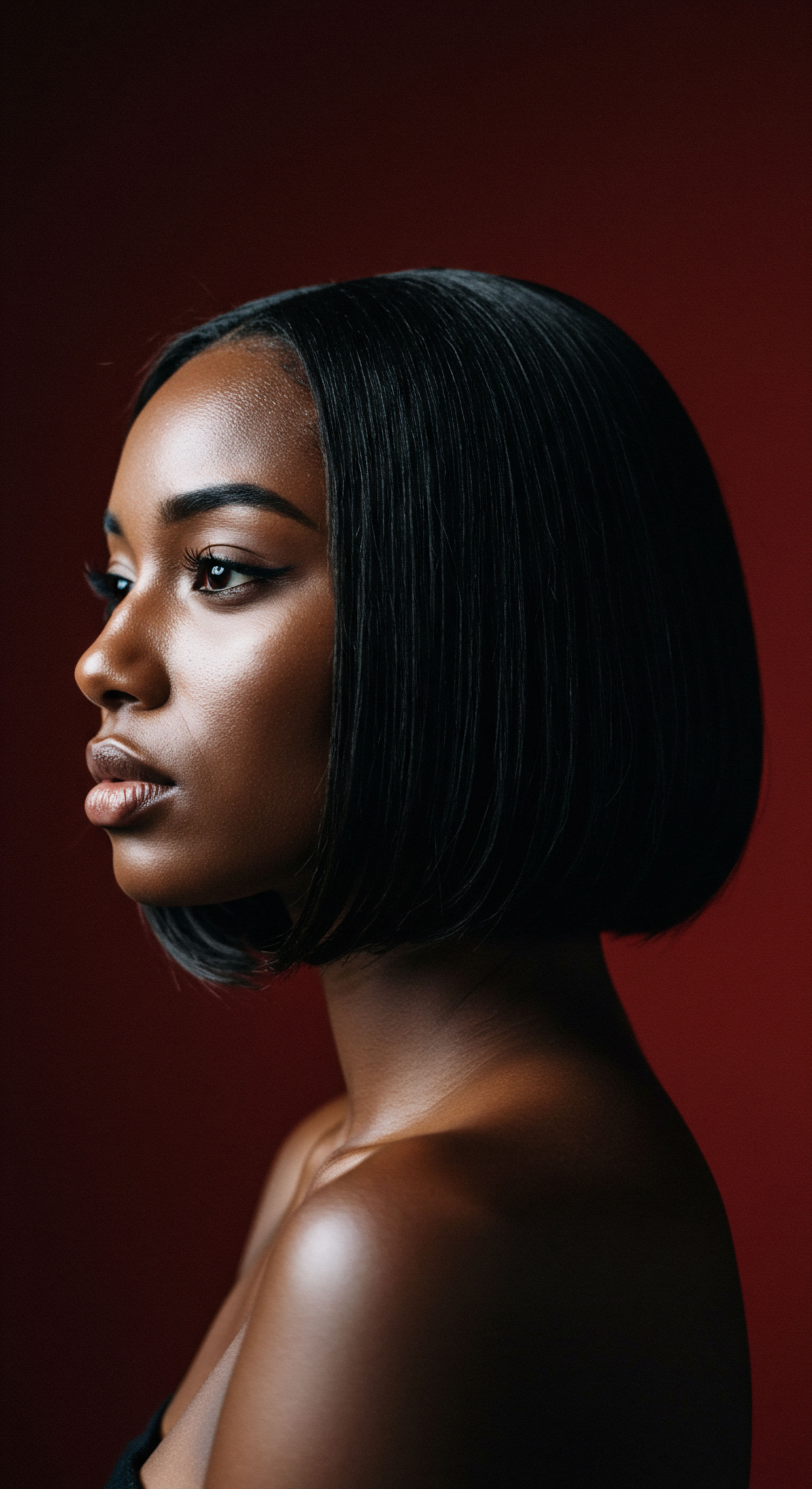
The Hair’s Outer Shield
At its most fundamental, hair porosity speaks to the cuticle, the outermost layer of each individual hair strand. Picture it as a shingled roof, meticulously laid, with each shingle overlapping the next. The way these microscopic scales lie determines how open or closed the roof is. This architectural marvel dictates the ease with which moisture, and indeed oils, can enter or exit the hair shaft.
A strand with cuticles lying flat and tightly closed possesses low porosity, creating a formidable shield. Conversely, hair with more open or raised cuticles displays high porosity, offering a more welcoming, though sometimes overly generous, entryway. The middle ground, normal porosity, suggests a balanced structure, allowing for efficient absorption and retention. This structural reality, often inherited, can also be influenced by external factors like heat styling, chemical treatments, or even environmental exposures.
Hair porosity, governed by the cuticle’s structure, dictates how readily oils and moisture enter or exit the hair shaft.

What Does Hair Porosity Tell Us About Oil Interaction?
The interplay between hair porosity and oil absorption is a dance of molecular size, viscosity, and the hair’s inherent architecture. Oils, with their diverse compositions, do not behave uniformly when presented with different cuticle arrangements. A lighter oil, with smaller molecular compounds, might find passage easier through slightly less open cuticles than a dense, heavier oil. The very nature of the oil, whether it is a penetrating oil like coconut or olive, or a sealing oil like jojoba or castor, plays a significant part in this interaction.
Penetrating oils are designed to slip past the cuticle and reach the hair’s cortex, offering deep conditioning and structural support. Sealing oils, by their design, aim to form a protective layer on the surface, minimizing moisture loss from within and providing a smooth, reflective finish.
- Low Porosity Hair A hair strand with low porosity often feels smooth and dense. Water beads on its surface rather than sinking in immediately. When oils are applied, they tend to sit on the strand, sometimes giving a greasy appearance if too much is used or if the oil is too heavy.
- Normal Porosity Hair This hair type typically accepts and retains moisture well. Oils absorb evenly without excessive residue or immediate dryness. It offers a balance, a responsiveness to a wider array of products.
- High Porosity Hair Characterized by a rougher texture and a tendency to air dry quickly, high porosity hair readily absorbs moisture and oils. However, it can lose them just as quickly. Oils often vanish, leaving the hair feeling dry again within a short period, necessitating frequent reapplication.
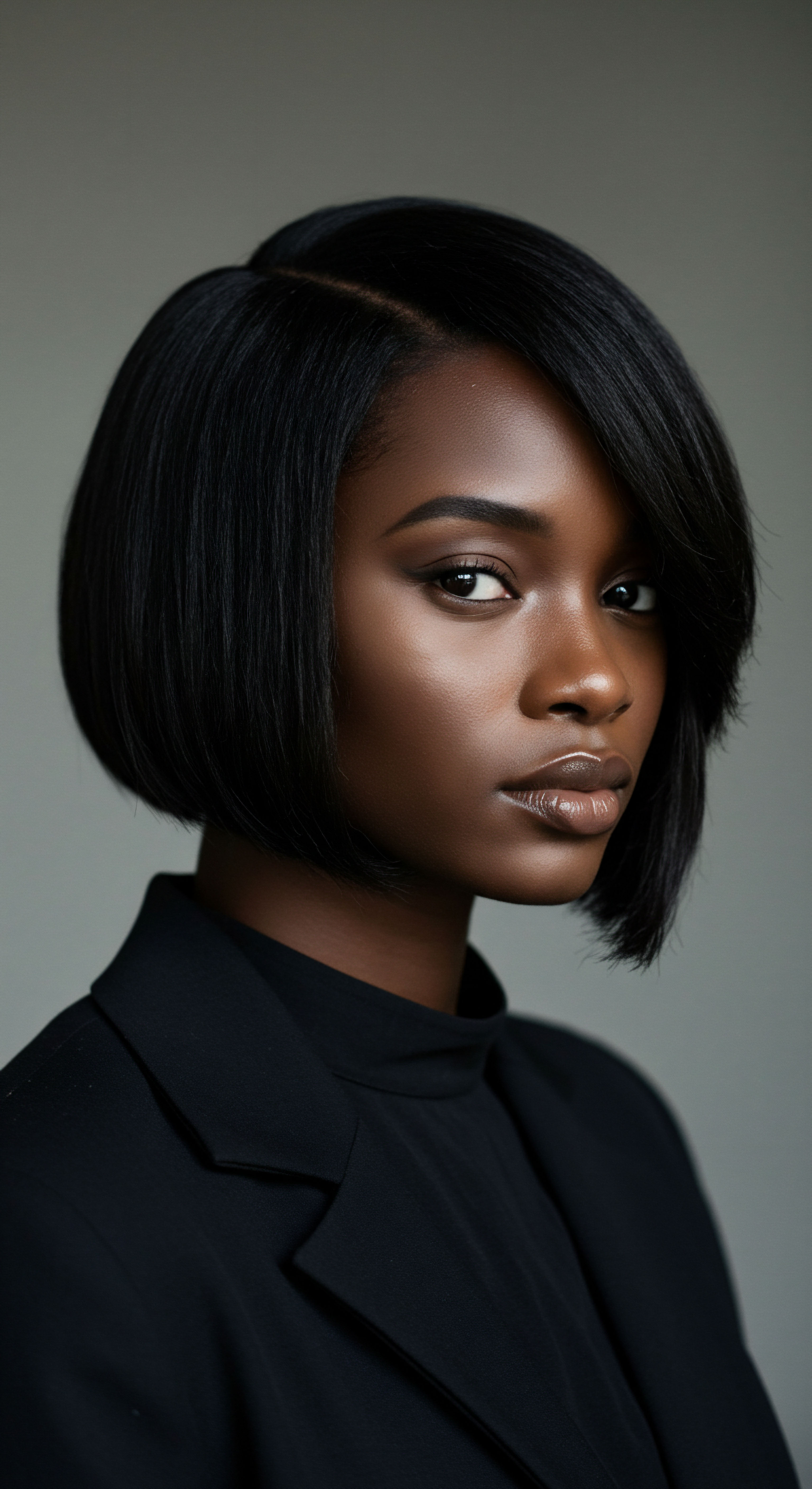
Ritual
Having contemplated the foundational science of hair porosity, our journey now shifts to the practical wisdom that arises from this understanding. How do we move from quiet observation to intentional practice, shaping our daily and weekly care rituals to honor our hair’s unique absorption language? This section offers a gentle guide, acknowledging that the practices we adopt are not just about applying products, but about creating a dialogue with our strands, learning their rhythms, and offering them precisely what they require to truly thrive. It speaks to the thoughtful application of oils, recognizing that the very act of offering sustenance to our hair is a ritual of care, a moment of connection.

Selecting Oils for Porosity
The selection of oils becomes a deliberate act once hair porosity is understood. For those with Low Porosity Hair, the goal is to encourage absorption without overwhelming the strand. Lighter oils with smaller molecular structures are often the most receptive. Consider oils like Argan, Jojoba, Grapeseed, or Sweet Almond.
These oils tend to penetrate more readily without leaving a heavy, coated sensation. Applying them to slightly damp, warm hair can also assist absorption, as warmth can gently lift the cuticle, creating a more receptive surface. Overuse of heavy oils can lead to product buildup, making the hair feel weighed down and potentially inhibiting future moisture entry.
For hair exhibiting High Porosity, the approach differs. The challenge here is not absorption, but retention. Oils with larger molecules, those that create a more substantial seal on the hair shaft, prove beneficial. Think of Castor Oil, Olive Oil, or even Shea Butter.
These provide a protective barrier, slowing down the rapid escape of moisture and conditioning agents. Layering these heavier oils over a water-based leave-in conditioner or a humectant-rich product can create a robust moisture seal, keeping strands hydrated for longer periods.
Normal Porosity Hair enjoys the broadest spectrum of oils. This hair type can benefit from a balance of both penetrating and sealing oils. A blend that offers both deep conditioning and surface protection often yields the best results, allowing for versatility in product choice and styling.

Application Techniques for Absorption
Beyond oil selection, the method of application profoundly influences absorption. For low porosity hair, a gentle approach is key.
- Warmth and Dampness Applying a light oil to hair that is slightly damp and warmed (perhaps from a warm towel or gentle steaming) can help open the cuticle just enough to allow the oil to enter.
- Small Amounts Use very small amounts of oil, distributing it evenly. Less is often more, preventing residue.
- Consistent Massage A gentle massage into the strands can aid distribution and encourage absorption.
For high porosity hair, sealing is paramount.
- LOC or LCO Method The Liquid, Oil, Cream (LOC) or Liquid, Cream, Oil (LCO) methods are often beneficial. The liquid provides hydration, the cream adds conditioning, and the oil then acts as the final seal, locking everything in.
- Heavier Oils as Sealants Apply heavier oils or butters as the final step in your moisturizing routine to truly lock in the hydration.
- Regular Reapplication High porosity hair may require more frequent oil applications to maintain moisture levels throughout the day or week.

Does Oil Absorption Vary with Hair Type and Texture?
The coiled, kinky, and wavy patterns inherent to textured hair introduce another layer of complexity to oil absorption. The very structure of a curl, with its bends and turns, means that oils must navigate a more tortuous path along the strand. This can affect how evenly an oil distributes and how effectively it coats the entire length. Additionally, the cuticle layers on textured hair, particularly those with tighter coils, can sometimes be naturally more lifted or uneven, contributing to higher porosity.
This predisposition means that many with textured hair find themselves managing the challenges of high porosity, where moisture and oils are absorbed readily but also lost with equal swiftness. The delicate nature of these strands also means they are more prone to dryness, making the efficient delivery and retention of oils a paramount concern for maintaining suppleness and strength.
Consider the density of textured hair as well. A head of dense, tightly coiled strands, even if individually low porosity, presents a vast surface area requiring careful oil distribution. Conversely, fine, high porosity strands, while individually absorbing quickly, may feel overwhelmed by heavy oils if not applied judiciously. The ritual of oiling textured hair, therefore, becomes a nuanced art, balancing the hair’s porosity with its unique pattern and density, always with the goal of nurturing its inherent beauty and resilience.
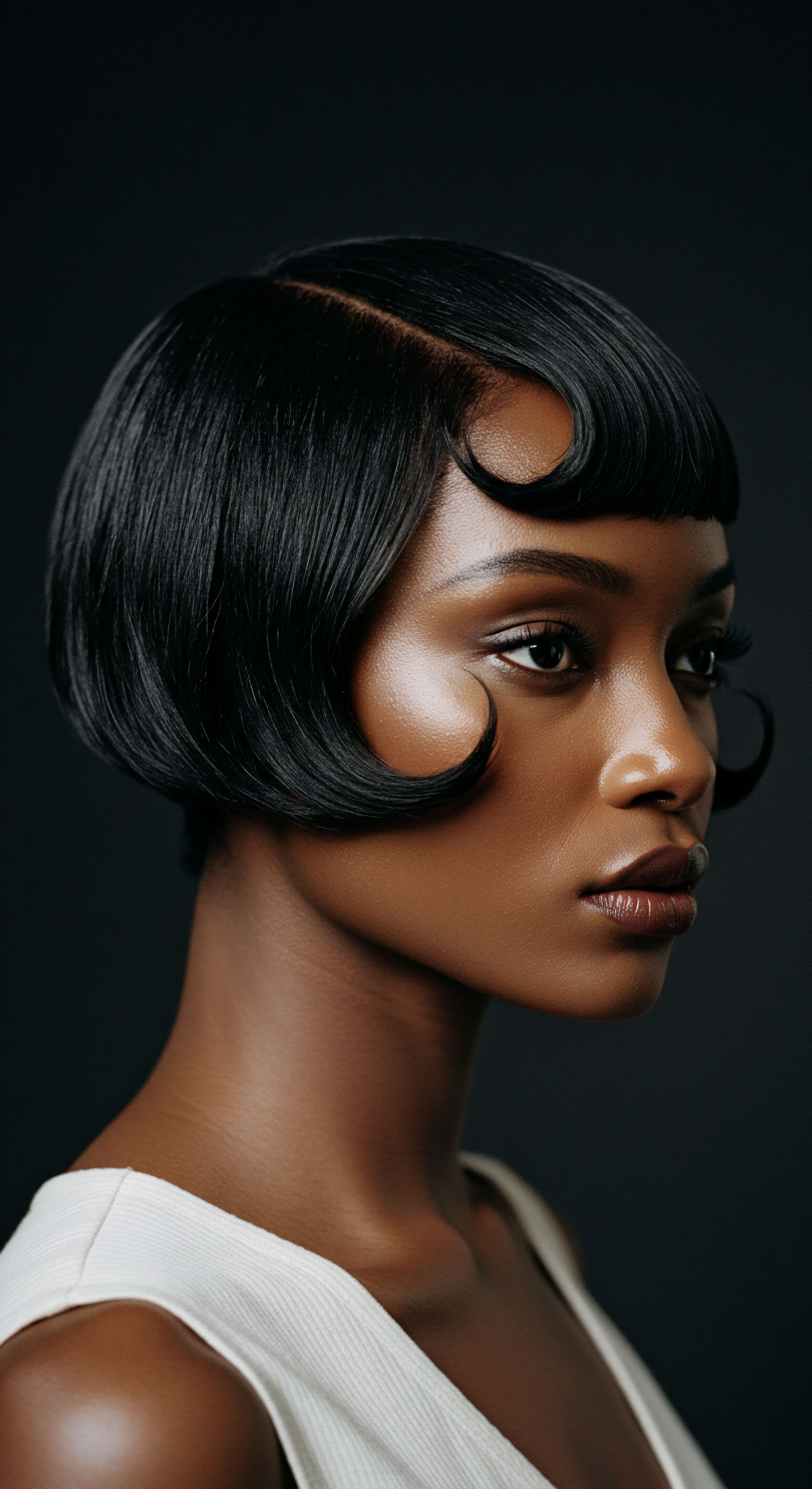
Relay
Our journey now takes us to the deeper currents of understanding, where the scientific threads of hair porosity and oil absorption intertwine with broader cultural perspectives and less commonly discussed data. It is here that we move beyond the immediate practicalities, to question the very assumptions that shape our approach to hair care. We seek to illuminate the intricate dance between our hair’s inherent structure, the molecular characteristics of oils, and the environmental or even ancestral influences that shape this relationship. This section aims to provide a more sophisticated understanding, drawing upon research that might challenge conventional wisdom and offering a richer context for our hair’s interaction with the world around it.
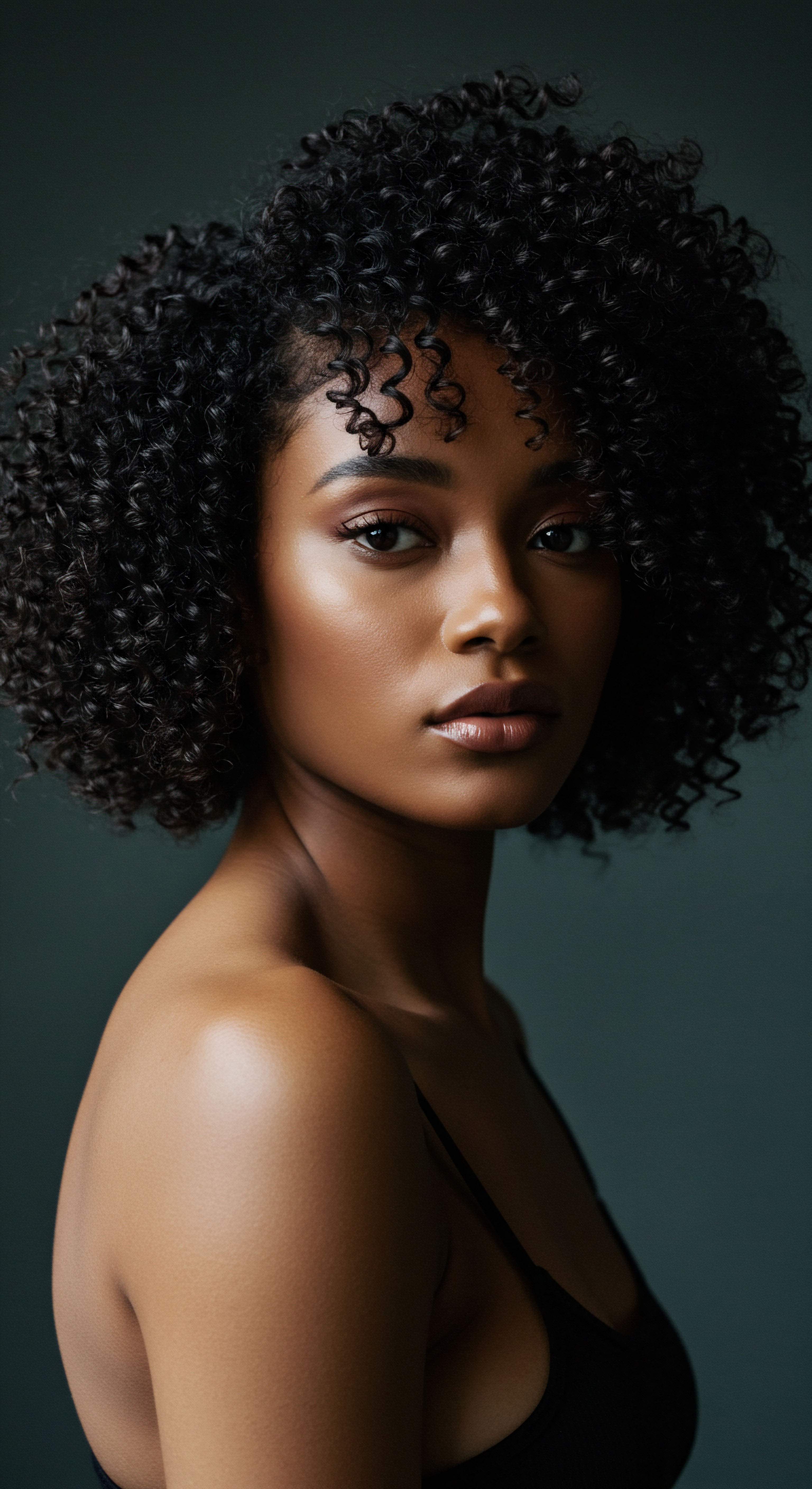
How Does Oil Molecular Structure Influence Absorption?
The efficacy of an oil on hair is not simply a matter of its perceived lightness or heaviness, but a profound interaction at the molecular level. Oils are complex mixtures of fatty acids, each with distinct chain lengths and saturation levels. These characteristics dictate an oil’s viscosity, its ability to spread, and critically, its capacity to permeate the hair’s cuticle and reach the cortex.
Research into lipid penetration has shown that certain oils, particularly those rich in saturated fatty acids like lauric acid (abundant in Coconut Oil), possess a molecular structure small enough to slip through the tightly packed cuticles of even low porosity hair and integrate with the hair’s internal protein structure. This is a departure from the generalized notion that low porosity hair ‘resists everything.’ Instead, it suggests a more selective permeability based on molecular fit.
Conversely, oils with larger, more complex molecular structures, often rich in polyunsaturated fatty acids, tend to remain on the surface. While they may not penetrate deeply, their value lies in their film-forming capabilities, creating a protective layer that minimizes moisture loss. This surface interaction is particularly beneficial for high porosity hair, which struggles with retaining hydration due to its open cuticle structure.
A study by the Cosmetic Science and Technology Society of South Africa (2018) highlighted that while some oils like coconut oil showed significant penetration into the hair cortex, others, such as sunflower oil, primarily functioned as surface lubricants, improving manageability and sheen without deep internal conditioning. This data underscores that the ‘best’ oil is not universal, but rather a strategic choice aligned with hair porosity and desired outcome.

Can Environmental Factors Alter Hair Porosity and Oil Uptake?
Our hair exists within an environment, and this external world exerts a tangible influence on its porosity and, consequently, its interaction with oils. Factors such as humidity, UV radiation, and even the mineral content of water can subtly, or sometimes dramatically, alter the cuticle’s integrity. High humidity can cause the hair shaft to swell, potentially lifting cuticles and increasing temporary porosity, making it more receptive to moisture but also prone to frizz if not sealed. Conversely, prolonged exposure to dry air can dehydrate the hair, making it brittle and less receptive to oil absorption initially, as the cuticles might become rigid.
The impact of UV radiation is particularly noteworthy. Sunlight, while essential for life, can degrade the hair’s protein structure and lift the cuticle, leading to increased porosity over time. This makes the hair more vulnerable to moisture loss and less efficient in retaining beneficial oils.
Research published in the Journal of Cosmetic Science (2009) explored the effects of UV exposure on hair fiber properties, noting a measurable increase in porosity and a decrease in tensile strength in exposed hair. This suggests that protective measures, including the use of oils with natural UV-filtering properties or those that form a physical barrier, become not just cosmetic choices but acts of defense against environmental stressors.
| Porosity Type Low Porosity |
| Cuticle State Tightly Closed |
| Recommended Oil Molecular Size Small (e.g. Lauric Acid) |
| Primary Oil Function Penetration & Conditioning |
| Porosity Type Normal Porosity |
| Cuticle State Balanced |
| Recommended Oil Molecular Size Small to Medium |
| Primary Oil Function Balanced Penetration & Sealing |
| Porosity Type High Porosity |
| Cuticle State Open/Raised |
| Recommended Oil Molecular Size Large (e.g. Oleic Acid) |
| Primary Oil Function Sealing & Protection |
| Porosity Type Strategic oil selection aligns molecular properties with hair's unique porosity for optimal results. |
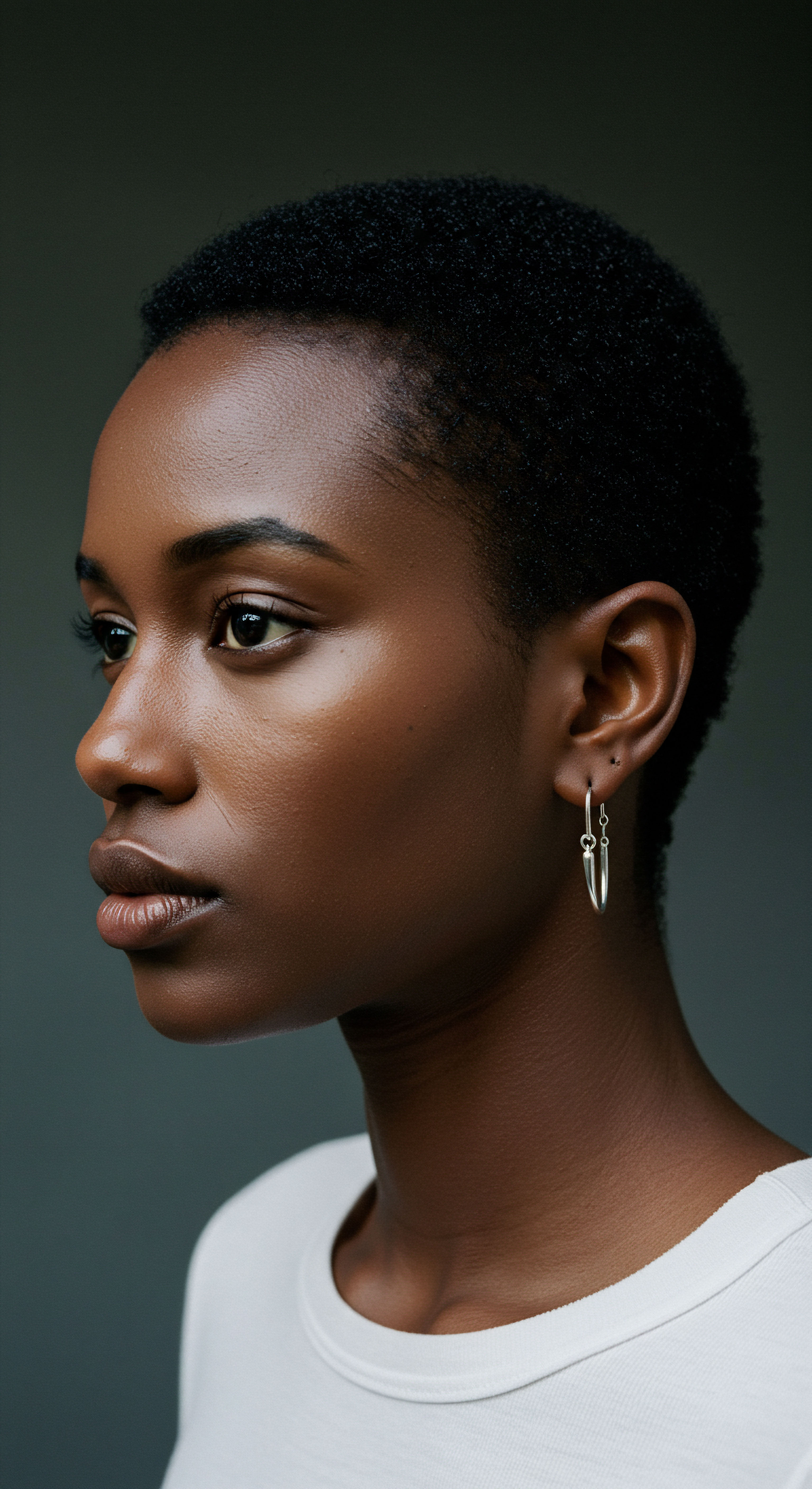
Are There Cultural Traditions That Reflect Porosity Understanding?
Long before the advent of modern cosmetic science, various cultures developed sophisticated hair care traditions that, in retrospect, intuitively addressed the principles of hair porosity and oil absorption. These practices, passed down through generations, often centered on natural ingredients and specific application methods that aligned with the hair’s observed needs. In many African and diasporic communities, the practice of oiling the scalp and strands with rich, often dense, botanical butters and oils like Shea Butter, Cocoa Butter, and Castor Oil was commonplace.
These are typically heavier oils, known for their sealing properties. Given that many individuals of African descent often have hair with naturally higher porosity due to the unique structure of their coiled strands, these traditional choices inherently provided the necessary external barrier to retain moisture in a climate that could otherwise lead to rapid dehydration.
Consider the historical use of hot oil treatments in various cultures. The application of warmed oils, sometimes under a cloth or steam, is a technique that gently encourages the lifting of the cuticle, allowing for deeper penetration. This practice, while not explicitly labeled as addressing “low porosity,” served precisely that purpose, enabling denser oils to reach the hair’s interior. Conversely, in regions with naturally finer hair textures that might be more prone to low porosity, lighter oils or infusions were often favored, applied sparingly to avoid weighing down the hair.
These ancestral methods, honed through observation and lived experience, offer a compelling testament to a deeply ingrained understanding of hair’s needs, predating scientific nomenclature. They underscore that the quest for healthy, vibrant hair is a timeless human endeavor, guided by wisdom that transcends eras.

Reflection
Our exploration of hair porosity and oil absorption has taken us from the microscopic architecture of a single strand to the broad strokes of cultural heritage, revealing a dynamic interplay that shapes the very essence of our hair care. It is a dialogue between science and intuition, structure and nurture. To truly listen to our hair, to respond to its whispers of need, requires a patient observation, a willingness to adjust, and a gentle hand. This understanding invites us to move beyond rigid rules, into a space of informed adaptability, where every drop of oil, every careful application, becomes an act of recognition for the unique beauty residing within each coil, curl, and wave.

References
- Cosmetic Science and Technology Society of South Africa. (2018). The Science of Hair Care ❉ Formulations and Products. Johannesburg, South Africa ❉ CSTA Press.
- Dawber, R. P. R. (2009). Hair ❉ Its Structure and Function. Boca Raton, FL ❉ CRC Press.
- Robbins, C. R. (2012). Chemical and Physical Behavior of Human Hair. New York, NY ❉ Springer.
- Yu, J. et al. (2016). Hair and Scalp Diseases ❉ Medical, Surgical, and Aesthetic Treatments. Boca Raton, FL ❉ CRC Press.
- Khumalo, N. P. & Mkhize, N. (2020). African Hair and Scalp Disorders ❉ A Scientific and Clinical Approach. Cape Town, South Africa ❉ UCT Press.
- Bouillon, C. & Wilkinson, J. B. (2005). The Science of Hair Care. Boca Raton, FL ❉ CRC Press.